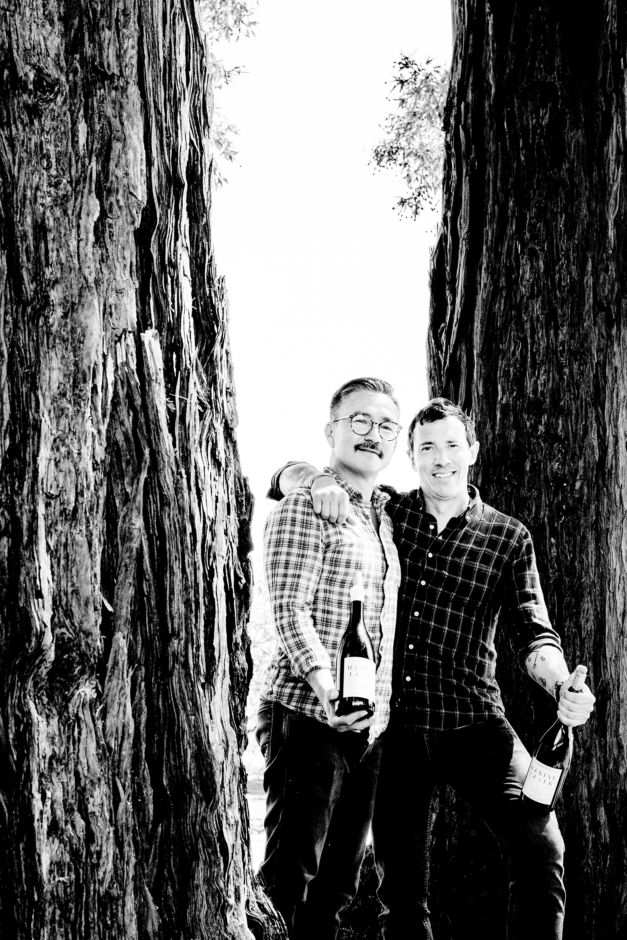27th Jul 2023
"We have been working on this new AVA for over seven years. So, to see its approval is a bit surreal."
- Christopher Strieter of Senses Wines
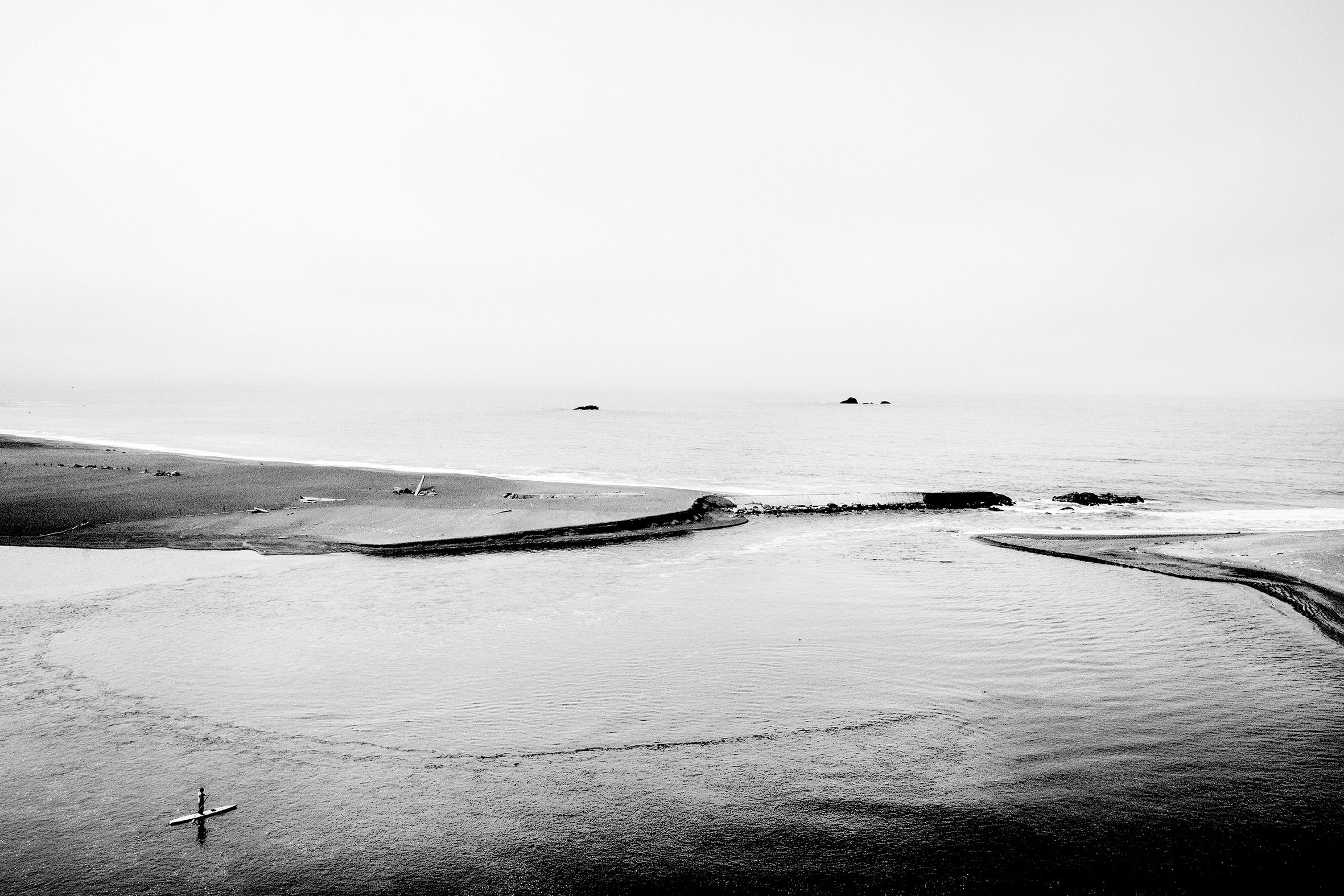
Cold Soul
Last year, the West Sonoma Coast AVA was approved and can be applied to the labels from the 2021 vintage onwards. It’s within/cleaved off the larger Sonoma Coast AVA, aiming to highlight those seriously cool climate areas that hug the Pacific coastline. Sonoma Coast AVA currently covers around 500,000 acres (4700+ devoted to vines), whereas the new West Sonoma Coast AVA is just over 140,000 acres (1000 of it planted) with about 47 commercial wineries. It’s worth noting that this new West Sonoma Coast AVA encompasses all the Fort Ross-Seaview AVA, which is now an AVA within an AVA, and within an AVA (Sonoma Coast), a situation permitted in the Alcohol and Tobacco Tax and Trade Bureau rules. Wineries within the new West Sonoma Coast boundaries can therefore choose to continue to use Sonoma Coast or West Sonoma Coast on their labels, or, if within the Fort Ross-Seaview boundaries, they can continue to use this AVA. Only a few have started using the AVA, although many of the winemakers I spoke to who qualify for the new AVA intend to use it on their labels.
“The distinguishing features of the proposed West Sonoma Coast AVA include its topography, geology, and climate,” states a published document on the US Government’s Federal Register. “The topography of the proposed West Sonoma Coast AVA is characterized by the steep, rugged mountains and ridgelines that form the Coastal Ranges. The summits of these coastal mountains can exceed 1,000 feet. The high elevations of the Coastal Ranges provide areas for vineyards that are above the fog layer. The ridgelines also create areas at lower elevations that are sheltered from the heaviest marine fogs, where viticulture may take place successfully within the fog line.”
The document highlights the distinct marine-based sedimentary rock geology make-up of the West Sonoma Coast and, critically, the premise that its climate is more influenced by marine winds and fog than the more inland regions of Sonoma County. “Daytime temperatures are generally cooler and nighttime temperatures are generally warmer than in the more inland regions,” the successful petition asserted. The petitioning vintners concluded that the impact of the elevation, fog, and proximity to the ocean means that areas of West Sonoma Coast are often 10 degrees Fahrenheit cooler than parts of the Sonoma Coast AVA that are further east. In short, these conditions benefit the slow, even ripening of high-quality Pinot Noir and Chardonnay.
This new AVA is excellent news for consumers seeking true cool climate Pinots and Chardonnays.
Yes, at no less than nineteen different Sonoma AVAs now, so many different viticultural boundaries and names can be confusing. But for engaged consumers who have a clear idea of the styles of wines they love, the West Sonoma Coast name on the label can be a very useful guidepost.
Before the journey to gain approval for the new AVA even began, a group of like-minded wineries banded together to form the West Sonoma Coast Vintners association to help educate consumers and trade. There are currently 28 winery members, including high-profile names such as DuMOL, Joseph Phelps, Littorai, Occidental, Senses, and Wayfarer.
In May this year, Christopher Strieter from Senses Wines helped to organize a tasting for me of a collection of the West Sonoma Coast Vintners’ new releases. Note that the Senses wines were not included in this tasting since I already tasted them earlier in the year. Likewise, DuMOL, Littorai, and Occidental are reviewed separately in feature articles. During these tastings, I had the opportunity to sit with most of the West Sonoma Coast winemakers and/or winery owners to learn a little more about their vineyards and stories. I’ve included the details of some of these below.
Alma Fria
Carroll Kemp was the co-founder/winemaker of the successful Sonoma Coast label Red Car Wines. He parted ways with Red Car in 2018 to embark on a new project with his friend Jan Holtermann: Alma Fria, the name meaning “cold soul” and referring to “the soul of a family, the cold of a geography.” He has been an early proponent of the West Sonoma Coast AVA. Organic and biodynamic principles are embedded in his winemaking philosophy, but this is just a launching point. Carroll’s aim is to make Chardonnays and Pinots that have absolutely no additions apart from a pinch of organic sulfur after malolactic fermentation.
The first thing that needs mentioning is that the style of Alma Fria’s wines can be polarizing. I always taste with an open mind and a broad range of consumer types in mind, but I know a lot of other professionals are dogmatic about extreme non-interventionalist wines like these. As always, I strive to describe the styles of the wines as accurately as possible so that consumers can decide for themselves. I personally find these latest releases have a lot of personality and soul. I can certainly see why some consumers will love them. However, if you are looking for pristine wines that shout fruit, fruit, fruit—look elsewhere.
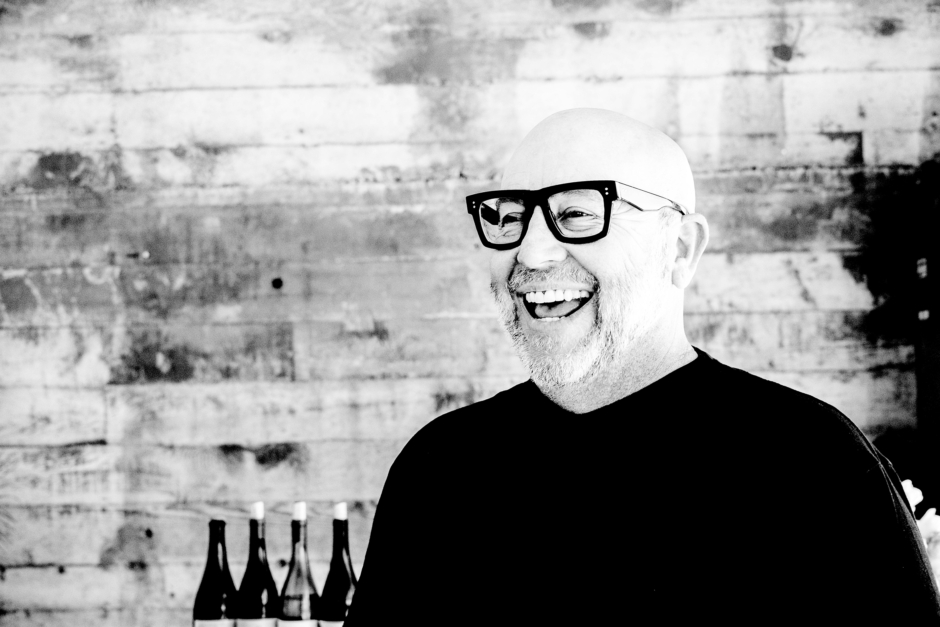
Boars’ View
Boars’ View is Fred Schrader’s (formerly of the Schrader label in Napa Valley) next step, small-but-great project, this time focusing on Pinot Noir and Chardonnay. The vineyard is in a remote coastal location 45 minutes northwest of Cazadero in the Fort Ross-Seaview AVA. It was planted in 2007 by local viticultural legend Ulises Valdez, who has sadly since passed.
“Thomas Rivers Brown has been winemaker since the beginning,” said the estate’s general manager, Jennifer Downing. “We have a little under 12 acres planted. The Chardonnay (2 acres) is all Wente Clone selection. The Pinot Noirs (10 acres) are Calera, Mt Eden, and Swan clones. We only make three wines, and that’s what the vineyards will sustain.”
The first vintage release of this estate was in 2012. The caliber of the 2021s demonstrates a magic vineyard site really starting to hit its stride. Poised to be the best wines to come out of this area since Marcassin (which I suspect is where the tongue-in-cheek name comes from), Pinot, and Chardonnay collectors need to get on this mailing list.
Cobb Wines
Ross Cobb is the owner and winemaker at this small estate close to the coast in Occidental. The vineyard was planted in 1989 by his parents, David and Diane. For years, the fruit was sold to local wineries. In 2001, Ross began making wine from his family’s estate. There are now 14 acres under vine here. These are graceful, delicately styled, sensitively crafted wines devoted to showcasing fragrance and savoriness with compelling quiet intensity. Production is tiny, yet these are well worth the hunt.
Flowers Vineyards & Winery
It was great to recently catch up with Chantal Forthun, who has been making the wines at Flowers since 2012 and has seen the estate through many changes. With this latest set of releases, I noted a big upwards shift in quality.
“Being on the coast, that close to the San Andreas fault, the soils are so randomized,” Chantal explained. “So, we’ve dug a lot of soil pits recently! I was looking to connect soil textures to wine textures. And from the beginning of this project, it was sheer lightbulbs going off. This has helped me to adapt my winemaking to soil types. If you treat everything the same, then the greatness is never going to show. Now we’ve specialized winemaking techniques based on what we know about the soil. Following this exercise, I have three new wines to show you: Camp Meeting Ridge Almar Chardonnay, Sea View Ridge Pietra Pinot Noir, and Sea View Ridge Cielo Pinot Noir. This is only the second vintage we’ve produced of them. Take the Sea View Ridge Pietra Pinot Noir, for example. This was always a difficult block for me. But by understanding the soil-fractured red-orange stone, we learned not to pick too late here and not to extract too much.”
These new soil-type isolated, adaptive winemaking wines take what I’ve previously tasted from Flowers to a whole new level. They come highly recommended.
Flowers didn’t bottle any 2020 wines due to the vineyard’s proximity to the wildfires that year. (The fire was only two miles from the vineyard.)
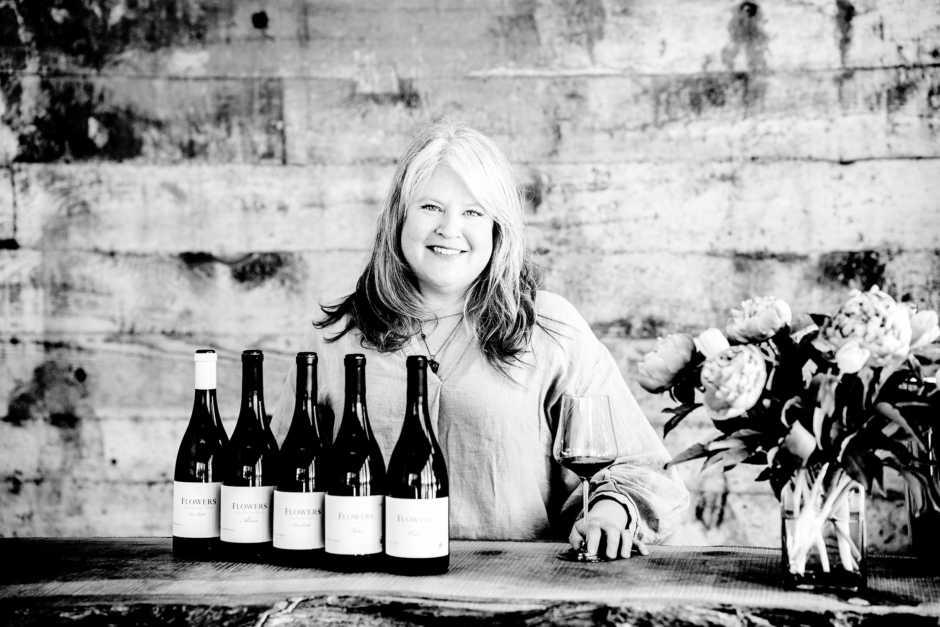
Hirsch Vineyards
I caught up with Jasmine Hirsch to taste her new releases. “My father went to Fort Ross-Seaview in 1978,” she told me. “In 1980, he started to plant vineyards—four acres of Chardonnay and the rest is Pinot Noir. Our first estate vineyard wine was made in 2002. Before that, we just farmed and sold fruit. When we started making wine, there were only two wineries in Fort Ross-Seaview: us and Wild Boar. It was remote, but we wanted to be close to where we grow the grapes. There wasn’t even any electricity when we first went out there. Ours is a true estate model; we have vineyards surrounding the winery. We buy a tiny bit of fruit for one label, but everything else comes from vineyards we own and manage. It is more like a village for us or a commune. We have many differences between our sites. We are half a mile from the San Andreas fault, which gives a lot of different soil types. You can get so many varied fruit expressions. We have 68 acres of Pinot Noir planted. I started working for my father in 2008 doing sales and marketing.
In 2020 we lost a lot of parcels to smoke taint. We made wine from all the fruit we harvested in 2020 but had to get rid of about half the wines due to smoke taint. So, these are the only four Pinot labels we could make in 2020: San Andreas Fault Pinot Noir, Block 8 Pinot Noir, Reserve Pinot Noir, and West Ridge Pinot Noir. 2020 was only my second vintage managing the estate.”
Jasmine’s 2020 Pinot Noirs are an amazing achievement considering all the challenges of this vintage and really speak to that cooler climate of West Sonoma Coast, even in a hot vintage like this. Brava!
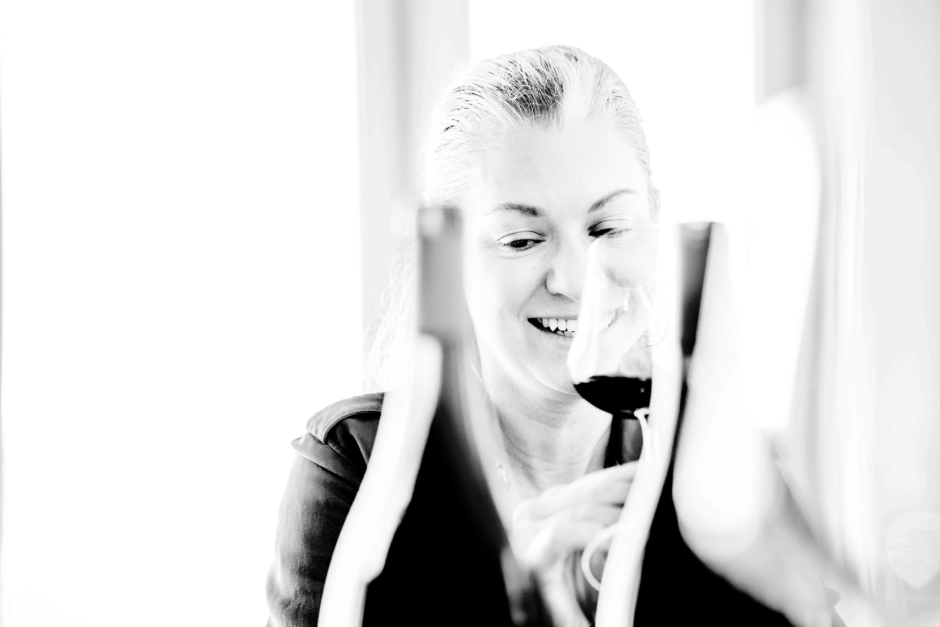
Three Sticks
Three Sticks is part of Bill Price’s Sonoma wine empire—Price Family Vineyards—which includes stakes in Kistler and Gary Farrell wineries as well as Durell, Gap’s Crown, and Walala Vineyards, to name a few. Durell Vineyard is 600 acres in total, with 138 acres under vine. It has a mix of clones, including Swan, Calera, and some Dijon clones. Walala Vineyard is near Annapolis, the northernmost vineyard in the new West Sonoma Coast AVA. This 17-acre vineyard was planted in 2005, all to Pinot Noir, mainly Dijon clones. Gary Farrell Winery purchased Gap’s Crown in 2012, and Kosta Browne continues to get fruit from here. It’s a 130-acre vineyard with 100 acres of Pinot and 30 acres of Chardonnay. This is the most consistently cool vineyard of the collection.
Wayfarer Vineyard
Fort Ross-Seaview was the first breakaway AVA to emerge from the larger Sonoma Coast sub-region in 2011, and for obvious reasons. One look at the area tells you this place is something else. Coming from the oceanside town of Timber Cove, a slow, winding drive down a desolate, redwood-lined mountain road takes you past a few of the pioneering wineries willing to put down stakes here—smack in the middle of nowhere. Wayfarer is one of them.
It was Helen Turley who originally brought the Wayfarer site to the attention of Jayson Pahlmeyer, who then owned Pahlmeyer Estate in Napa. Turley’s Marcassin vineyard is located nearby. The Wayfarer Vineyard is situated on King Ridge at an altitude of 1,100 feet in the mountains. Its height and proximity to the ocean have significant cooling influences, which can be felt when you drive up from the warmer Sonoma plains. But don’t let the cool air fool you—the aspect of this exposed mountaintop vineyard makes for a cleverly positioned suntrap.
Designed and planted by David Abreu in 2002, Wayfarer Vineyard is exclusively planted with Pinot Noir and Chardonnay. There are 30 acres under vine: 21 acres of Pinot Noir, 8.5 of Chardonnay, and half an acre of Syrah.
Wayfarer Vineyard has twelve Pinot Noir clones and four Chardonnay clones planted, among which there are only five Dijon clones. The rest are local heritage clones except for the mysterious “Wayfarer” Pinot Noir suitcase clone. (Meaning it traveled via suitcase/under-the-radar from Burgundy.) The property is now managed by Jayson’s daughter, Cleo Pahlmeyer.
“2021 was a very dry vintage,” winemaker Todd Kohn told me during our recent tasting. “We have a pond, so we still had plenty of water and could let the fruit hang as long as we wanted. 2021 wasn’t that hot, and there were no heat spikes. Everything was picked within a very tight window. As usual, everything was kept separate by clone and by block.”
In 2021, the vineyard was clearly firing on all cylinders. These are some of the finest Pinots and Chardonnays coming out of Sonoma.
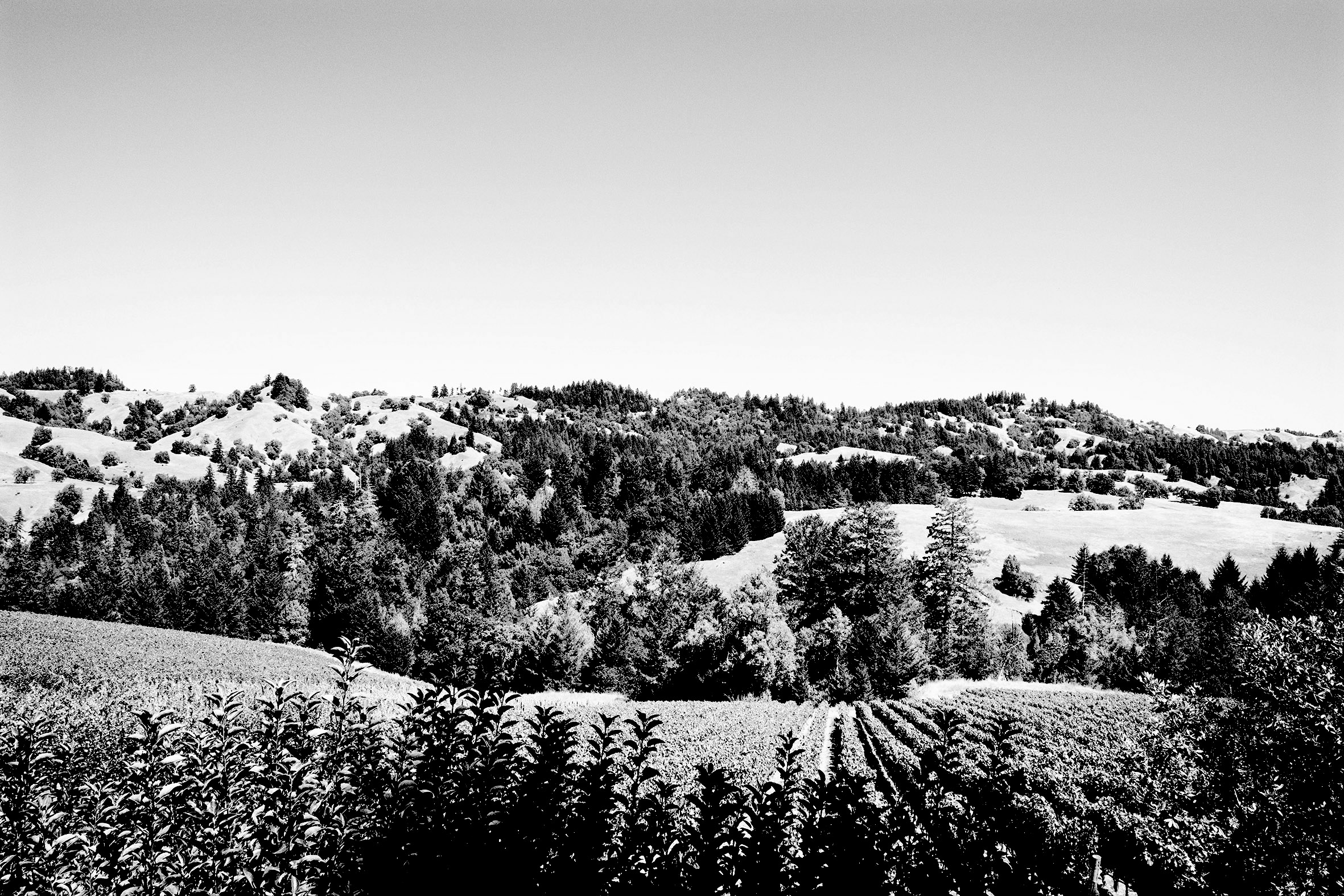
Peay Vineyards
A few years ago, I made the long journey up to the unincorporated community in Sonoma County known as Annapolis to visit Peay. It is literally in the middle of nowhere—a place without peers, which is its beauty and its burden. Standing in the vineyard instills that feeling where you don’t know whether to laugh or cry at the enormity of what has been accomplished and what has yet to be achieved.
Andy Peay still looks very young, considering he started this, his life’s project, in the mid-1990s. His unwavering, zealous energy is intoxicating. His and his brother Nick’s plan to take a remote sheep farm and apple orchard and turn it into one of California’s finest vineyards could have gone pear-shaped had Nick not married Vanessa Wong, an incredibly talented winemaker. Today they have 53 acres planted to 6 different grape varieties.
In my view, this latest line-up of 2021 Peay wines is their best ever. In the past, I’ve sometimes found the wines could be a little thin and the tannins a touch chewy. These 2021s deliver wonderful intensity and depth without compromising the raison d’être of this site: to produce wines of great restraint, structure, and finesse while maintaining purity and elegance. Here is the method to the madness. Grab these wines while you can, especially considering that Andy mentioned to me that they were affected by shatter in 2022, so the low yields for that vintage mean there will be less of the Pinots to go around.
The second label, “Cep” wines, also come highly recommended. Andy explained to me that these are true second wines deselected as a result of blind tasting all the separate lots. Not only does this ensure that only the best of the best goes into the Peay label wines, but it also means you’re getting an authentic taste of the Peay Vineyard with Cep.
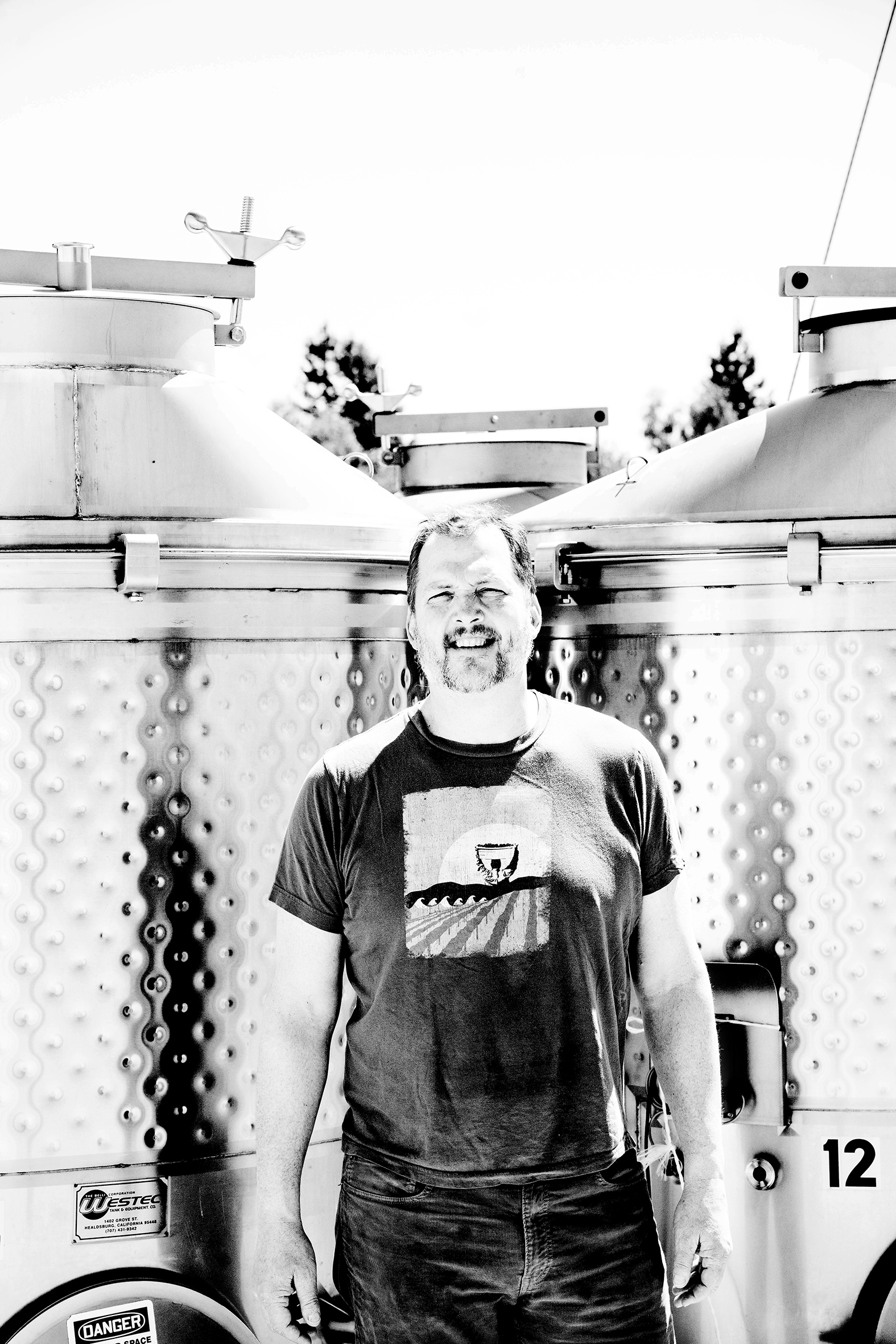
Small Vines
Small Vines is a small-production, family-owned vineyard and winery based outside Sebastopol in Sonoma. It is owned and managed by Paul and Kathryn Sloan.
“Kathryn and I met in 1995,” Paul Sloan told me. “I was leaving my job at John Ash & Co restaurant and decided I wanted to farm. Kathryn and I both grew up on big ranches. Then we decided to plant extremely dense plantings. I thought that the vines in this area were getting way too much solar radiation. We followed the 1 meter by 1 meter Burgundy model. We planted our first vineyard in 1998. We now make 3000 cases from our six estate-owned vineyards. We farm everything organically, and we dry farm (without irrigation). The dense plantings allow you to dry farm easier. Our plantings are denser than our neighbors’, but our yields are usually smaller. In the winery, we don’t use any press wine; it’s all free-run juice. TBH stands for The Barlow Homestead Vineyard. This is our home vineyard. The Pinot Noir here is mainly Calera, Swan, and Mt Eden.”
These are savory, minerally styles of Pinots and Chardonnays with great intensity and tension, delicious to drink upon release yet should cellar gracefully for a decade or more.

–
Article & Reviews by Lisa Perrotti-Brown MW
Photography by Johan Berglund
More articles

Cathiard Vineyard New Releases
02nd May 2024
3 tasting notes

Bordeaux 2023 Preliminary Vintage Report and Reviews from Barrel
29th Apr 2024
56 tasting notes

2021 Bordeaux in Bottle and A Modest Proposal
24th Apr 2024
599 tasting notes

Pilcrow’s New Releases
18th Apr 2024
7 tasting notes
Show all articles
